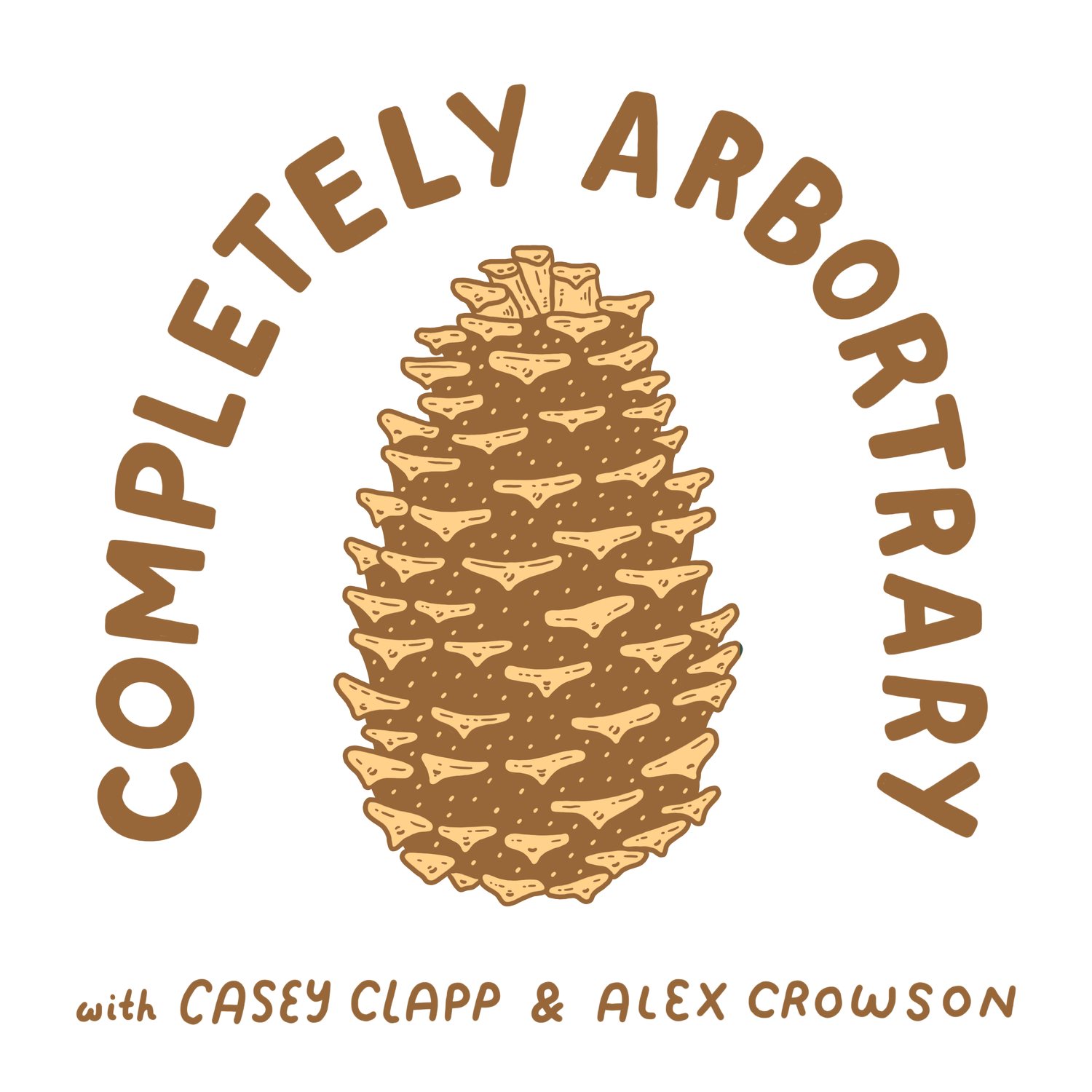SQUIRREL TALK (OREGON WHITE OAK)
SQUIRRELS! Today we burrow head first into a discussion of the Oregon white oak (Quercus garryana), another house favorite tree named by David Douglas, and our first broadleaf species. Most years these mighty acorn-makers supply local squirrel populations with plenty of food for winter. But what happens when an oak takes the year off, and how does that affect the squirrel world (or, Squirrorld ™)? Are squirrels organizational geniuses... or do they simply think like squirrels? How many times can you say the word "squirrel" until it starts to sound like gibberish? All these answers and more, on this episode of Completely Arbortrary.
Oregon White Oak
(Quercus garryana)
It’s not unusual to think that the world is run by animals. After all, they are the organisms that are most obviously moving around, making changes, and reacting to their surroundings. Plant life, on the other hand, is the forever docile and manipulatable kingdom that simply exists and bows to whatever circumstances it’s in with no real agency of its own. It’s fair to say that the common conception is that plants grow and do their thing despite what the nearest animal is doing; they are wholly unable to control their fate or the fates of offspring and are simple participants in the life drama unfolding around them. Woe is the tree for being so helpless.
Well, don’t be surprised when I tell you this common conception doesn’t really tell the whole story. I mean, come on, you really think plants lasted this long by sheer luck? At the minimum, let’s remember that plants have been at it since long before animals even emerged from the primordial seas. It shouldn’t be a surprise then to hear that often it’s the trees who are really pulling the strings.
The Oregon white oak (Quercus garryana in Latin, or the ‘Garry oak’ elsewhere in Cascadia where they can’t quite bring themselves to call it the Oregon oak) is one such tree that doesn’t idly sit by leaving its offspring’s survival to chance and the whims of the animals around it. The Oregon white oak, like many other oak species, has a trick up its trunk that lets it thumb the scales in its favor.
Growing along the west coast from the valleys and hills of Northern California to southern British Columbia, the Oregon white oak is one of the largest broadleaf trees native to the region. Though it has been known and used for thousands of years by the indigenous peoples along the west coast, a recurring character from the European school of botanical exploration, David Douglas, introduced it to the wider world and gave it its eponymous epithet honoring Nicholas Garry.
Now, as botanists started to really study our oak trees and learn about their differences, they began to notice some interesting botanical oddities. For example, many oaks in North America can be split into two groups, the white oaks and the red—or black—oaks. They noticed that these two groups go about reproduction slightly differently, the white oak group developing their acorns in just one season and the red oaks in two. They also noticed a curious pattern that seemed to rise above the groups, a veritable boom and bust cycle over the years in regard to how many acorns they produce, some years with truck loads and others with nary a single nut. Why would they do this?
The reason for such a flip-flop in mast production (“mast” being a generic term for nut production in forest trees) turns out to flip the script on the common conception of who’s actually in charge. Acorns, being a high value food for many a forest dweller, are sought after, stored, and eaten by everything from weevils and turkeys to bears and squirrels. In a high mast year, when there’s a glut of acorns from almost every tree, the forest fauna gets fat and happy, and as one would expect in such times of plenty, baby-making is at an all-time high. The next spring, populations of acorn eaters enter a boom. What they don’t know though is that the trees rigged the system.
While the populations of mice and squirrels are popping off, the trees quietly enter a subdued refractory period, and they don’t tell anyone about it. The next fall acorns are not just scarce, they are almost non-existent. Just when it’s needed the most to support booming balanophile populations, the trophic floor falls out from beneath them. Acorn eater populations plummet due to food scarcity, and the following year there aren’t as many hungry mouths to feed. Conveniently—or perhaps suspiciously—during this nadir in the population of squirrels, the oaks put out a brand new crop of acorns. This time however there’s plenty to go around; in fact, there’s excess, and the chance of survival for each acorn increases dramatically. The trees, it seems, played a clever trick.
So, who’s actually in control here? Is it the squirrel who caches and eats all the acorns a tree provides, controlling where and if new oak trees grow? Or is it the oak tree, who cleverly manipulates the populations of anything that eats its acorns in order to maximize its own success at their expense? Is our Oregon white oak a passive pawn to be used by the animal overlords or is it a diabolical puppet master who merely allows animals to believe their own delusion? The idea of control isn’t so clear cut after all.
Completely Arbortrary is produced and hosted by Casey Clapp and Alex Crowson
Support the pod and become a Treemium Member
Follow along on Instagram
Find Arbortrary merch on our store
Cover art by Jillian Barthold
Music by Aves and The Mini-Vandals
Episode cover photo by Walter-Siegmund
Additional Reading:
Oregon White Oak (Quercus garryana)
The Pit Trap Death of David Douglas
Mast Years: Of Mice and Mast
Tyloses and Whiskey Barrels
Corrections:
Re: Squirrel acorn storage - they are secret geniuses
The podcast regrets the error.

